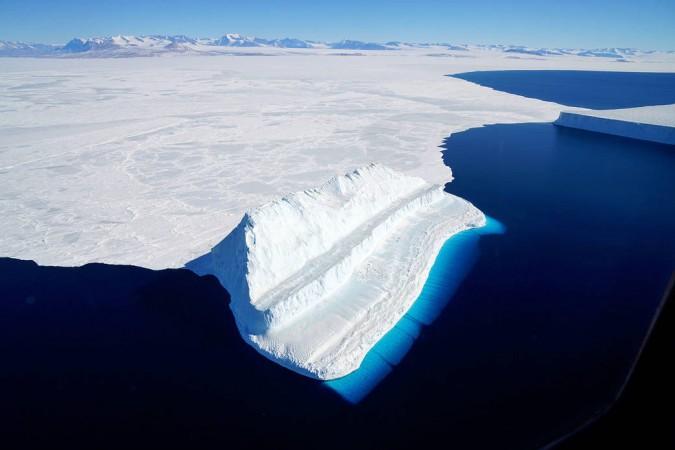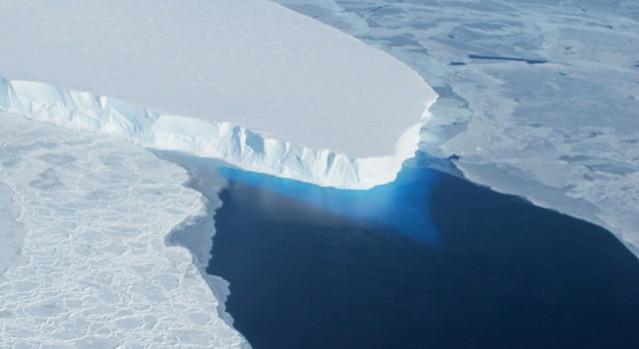
NASA's Operation IceBridge, an airborne mission to map polar ice, recently captured an incredible image of an Antarctic iceberg, surrounded by a strange glowing blue halo in the water.
According to the federal space agency, the submerged part of the eroded iceberg is actually "the bluest of ice" primarily due to blue light from the water in Antarctica's McMurdo Sound. The strange effect was spotted during a flight to Victoria Land as the aircraft flew over the
The remarkable effect was spotted during a flight to Victoria Land, as the aircraft passed over the bay off Antarctica that forms the western extension of Ross Sea. McMurdo Sound and its ice-clogged waters extend about 92 miles (148 km) long and up to 46 miles (74 km) wide, according to Encyclopaedia Britannica.
Operation IceBridge, which completed its survey of the icy continent earlier this week, captured the dramatic image of the glowing iceberg on November 29.
"The undersides of some icebergs can be eroded away, exposing older, denser, and incredibly blue ice. Erosion can change an iceberg's shape and cause it to flip, bringing the sculpted blue ice above the water's surface," NASA said.
But how did the unique step-like shape of the iceberg form? According to NASA, the distinct shape was likely created because the floating mass of ice might have rotated sometime after calving.

The mission recently made several flights out of the McMurdo and Amundsen-Scott South Pole stations, allowing researchers to have greater access to the interior of Antarctica.
Operation IceBridge, which has been studying how polar ice has evolved over the past nine years, is expected to help scientists better understand processes that connect the Polar Regions with the global climate system.
The mission was tasked to monitor key, rapidly changing areas of ice in the Arctic and Antarctic to maintain a long term observation record. It has also provided researchers with key data to better study ice dynamics and sea level rise conditions.













